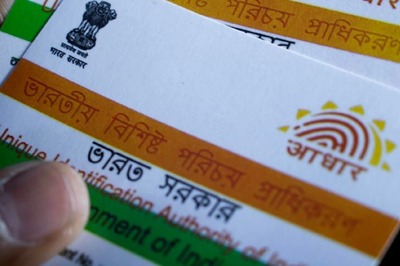
views
In what seems to be a post-pandemic brain drain, Indian students are not only opting to go abroad for better academic opportunities, but also better healthcare management and living conditions.
Ansh Anand, 17, took a loan to pursue a diploma in Canada as opposed to a degree in India. “The depreciating value of the rupee, major changes in the education system and widespread chaos during Covid-19 has made me look at options abroad. Even though my family could not afford to pay the fee, we thought it’s better to take a loan and study where jobs and lifestyle are better than India.”
The teenager is not a standalone example.
Experts believe the rise in the number of such students is not just because of the pending demand due to travel restrictions during Covid-19, but owing to the better healthcare systems abroad.
In 2019, as many as 5,86,337 students flew abroad, while in 2020 due to the pandemic, only 2,59,655 Indian students could go abroad. In 2021, with relaxed travel guidelines, the number doubled to 4,44,553, whereas, in the first half of 2022, as many as 2,45,601 have already taken admissions abroad. The admissions for the September session are yet to begin and the number of admissions is already at par with 2020, according to data offered by the Ministry of External affairs.

Apart from the usual destinations namely USA, UK, Canada and Australia, newer locations, including Germany, the Phillippines, Russia, and Singapore, are emerging as preferred study hubs for Indian students, as per the government data.
These emerging destinations are comparatively cheaper and cater to the emerging young Indians aspiring to study abroad, especially from middle-class backgrounds and those from tier-2 and tier-3 cities, say experts.
Pandemic Amplified Need for Better Lifestyle, Healthcare
“Better quality of education, robust pedagogy, upward economic mobility of households, better healthcare and living conditions are the major factors contributing to the rise in the number of students intending to study abroad,” said Ashish Fernando, founder and CEO, iSchoolConnect, a platform which offers foreign education facilities.
“Better quality of life has always been a critical factor for students studying abroad. However, the pandemic amplified its importance. Students are now also looking at how countries dealt with the pandemic when choosing their study abroad destination,” he said.
“We are seeing an increasing number of international schools mushrooming in tier-1 and tier-2 Indian cities,” said Poshak Agrawal, Co-Founder and Director, Athena Education.
“People are increasingly looking for meaningful college experiences. Clearly, the relatively better student experience and lower disruptions to learning have also contributed to it. The demand for excellent tertiary education in India is growing faster than the supply of new great universities being built,” said Agrawal.
“We are also noticing a trend where scholars are coming back to India after working abroad for a couple of years. There is a trend of such graduates wanting to translate some of their cross-cultural learnings and experiences to India by joining the start-up workspace. Our founding fathers, including Jawaharlal Nehru, Mahatma Gandhi or B R Ambedkar, all studied in top universities abroad and returned to India bringing the best principles, thoughts and practices from around the world with them,” he said.
Rise in Loans to Study, Sustain Abroad
According to a study by Prodigy Finance, a UK-based FinTech company, there has been a 98% growth in study-abroad loan applications in the first three months of 2022 for Indian students alone.
As per Indian edtechs, most of the loans are from metro cities. Leverage Edu- a global study abroad platform which also offers financial assistance claims to have seen over 500% rise in education loan applications in the first half of 2022.
Most of these applications are from metro cities.
Akshay Chaturvedi, founder & CEO of Leverage Edu, said, “A large majority of students from tier-2 and tier-3 towns prefer not to take education loans. They either opt for other traditional financing options or use savings for the first few semesters and then look for a part-time job there. Students and parents from large towns that still make up a majority of education loan disbursals.”
Read the Latest News and Breaking News here



















Comments
0 comment